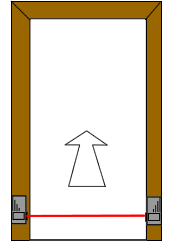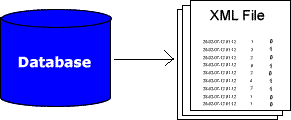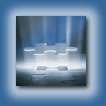How Does A Sensor Network Work?
To create a sucessful Sensor Network we must follow these four steps:
Step 1. Set Up Sensors
Sensor devices become useful only when they are used correctly. This involves using the correct sensor for the correct task.

Step 2. Locate Sensors
The location of a sensor is as important as choosing the correct device. If it is not placed correctly, then it may not work effectively.
Consider this example of a doorway within the home:
To monitor whether someone walks through a doorway or not, we require a device which will be reliably triggered. There are a number of possibilities, ranging from pressure mats either side of the door to PIR (Passive InfraRed) Detectors, but these can be inaccurate. The best choice would be multiple IR (InfraRed) Light Beam Sensors that bridge the doorway. When any of these light beams is broken, the system would know that someone has definitely walked through the door.
Step 3. Create A Network
The next step is connect all the sensors up to the system.

To do we use Data Acquisition Blocks. These provide an interface which the sensors can be wired to.
Each sensor has to be connected to a Data Acquisition Block to allow communication with the system. Communication can occur through either cabling or wireless technology. The PIR sensors that Dundee have been using are wireless, allowing easier installation than wired equivalents. However they can also be wired.
Step 4. Store Sensor Values
The Data Acquisition Blocks receive output from each sensor when it is triggered. This data is sent to the main system.
Output from the Data Acquisition Blocks is sent by standard network cable to the Home Care System. In its current form, the system is a desktop computer.

The outputs are interpreted by the National Instruments LabView software installed on the desktop computer, which writes the values to a database as XML (Extensible Markup Language).
The database records each output signal it receives, storing a timestamp, a device id number and the value which has changed, e.g. 0 or 1.


